#The original Into the woods is steller
Text
I need more proshots. No more turning musicals into movies. I swear if they make a Hadestown musical movie I will scream. We don't want another Into the Woods. Please. Just give us the proshots.
#Musical theatre#rants#Proshots#Make Broadway accessible#Why do you think Hamilton was so successful?#The original Into the woods is steller#It ruins the magic that the stage can provide#Broadway needs to be accessible to all audiences#For fucks sake its art
11 notes
·
View notes
Text
Original Character Cast
Trio:
Katie di Solace (Kathleen Maria Fiodoir):

THE CHILD. Adopted by Will and Nico di Solace at 8, after Nico finds her covered in mud in a swamp nature preserve in southern Maryland. Has Traumatic Selective Mutism until age 12/13, her PTSD makes her feel like she needs to hide. Daughter of Hephestus, inherited more of the magic side of making and specializes in miniatures, jewelry, and enchantments. Fluent in Italian, Spanish, and ASL from her speech therapy plan, good at languages. Was ‘a gift’, originally made of wood and copper but it wore off. Brave almost to a fault but not when it comes to girls, a strong sense of justice and the sword to back it. Year rounder from the age of 12 on.
On The Gods: Her perception of the gods is very skewed, as both of her adopted grandfathers are very active in her life
In the Trio: Holds all the magic smarts, and knows all the people. Out of her depth when it comes to mortals and how that world works but is amazing at demigod stuff.
Description: Ends up 5’7. Scots Irish Greek, but her Greek shows more. Bio family immigrated similarly to Frank's, but went through Scotland and then Ireland instead of China. Deep olive skin tone, big dark round eyes, dark brown hair with 3a curl pattern. Slim compact build. Her knees are switched so she needs to wear knee braces and sometimes use a cane.
Likes: making shit, Sify novels (especially the trashy paperbacks but shhhh), giving stitches, sword fighting, dope rocks, experimental enchanting, bones, eating bugs, explosives
Love language: Gifts
Fatal Flaw: Helper
Colton Elaine Brown:

Katie's best friend and QP (even though they never sit down and have that convo). Son of Hermes, the fastest runner at camp. Same age as her, meet at 9. Trans and bi, mostly Cuban with a bit of black. Bio dad is an extremely autistic man who drives school buses in Florida, he's not always verbal. Colton's stepdad is a middle-school English teacher. Is from downtown Orlando Florida and only spends the summer at CHB.
On The Gods: Pretty spooked by the gods and magic in general, will avoid it if he can
In the Trio: Holds all the street smarts. Katie’s Annabeth, the trio's mortal compass and bullshit meter. Great call of character, if he calls ‘retreat’ both Katie and Lettie will listen and follow. The driver always, the one to keep both of the space cases from wandering off.
Description: Never gets taller than 5’5. Short black hair with a 4a curl. Built like a runner, slim shoulders. Looks very Cuban but his black side comes out in his skin tone and his nose. Was on hormone blockers as he came out at 5 so never had to have top surgery
Likes: Transformers, Ninja Turtles, comics, track, traveling and exploring, climbing shit he shouldn't
Love language: Acts of Service
Fatal Flaw: Secret Keeper
Lettie Thatcher:

Katie's partner, lesbian, half a year older than her met at 13. Daughter of Demeter, strong Sappo parallels. Super strong physically even for a demigod, encyclopedic knowledge of medical plants good at memorization, hyperlexic. Very much a person in her own head, is perceived as quiet but is very observant and perceptive of everything around her, especially people. Bio mom was poet laureate for GA for a time and wrote a poem about grain and it wooed Demeter. Is from Savannah GA, lives there fall and winter lives at CHB spring and summer.
On The Gods: A pretty neutral take on larger gods, can befriend any nature spirit, especially dryads
In the Trio: Holds all the people smarts. Steller constitution, literally a ‘punch druid’ she's their tank.
Description: Tall and broad. Wide shoulders, wide hips, massive arms, ends up 5’10. Blond hair with a 3c curl pattern. Tons of freckles, gets them instead of burning. Thin nose, bright blue eyes, pink undertones
Likes: reading poetry and short works, bare-knuckle boxing, herb gardening, people watching, good BBQ (none of that camp grill crap with the store bought bbq sauce), trees and talking to them, eating dirt
Love language: Time
Fatal Flaw: Trust
Trio Powers Breakdown
Katie's Cabin Siblings
Ricky:

Specializes in armor, one year older than Katie. Goes by Dick sometimes (says it's fine because one of Robins is named Dick, only his cabin siblings can tease him with it)
Ruby:

NOT A REDHEAD. One year younger than Katie. Gets Project Possession worst out of all her siblings. She and Katie are the only year-rounder girls in their cabin so they are close. Best at the 'soft goods' part of their craft, leather worker
Simon Pidra:

El Salvadorian. Two years older than Katie. Head Counselor of Hephaestus Cabin by the end. Best carpenter in their cabin. He and Katie butt heads a lot as they are the two sides of the Hephaestus spectrum both in stature and skill set. But when they team up they're unstoppable. They have a very ‘only I can fight them’ relationship, they keep each other grounded. His bi awakening was sword fighting class with Nico, Katie hates this. Simon and Alex end up together
Atticus (Gus) Steel:
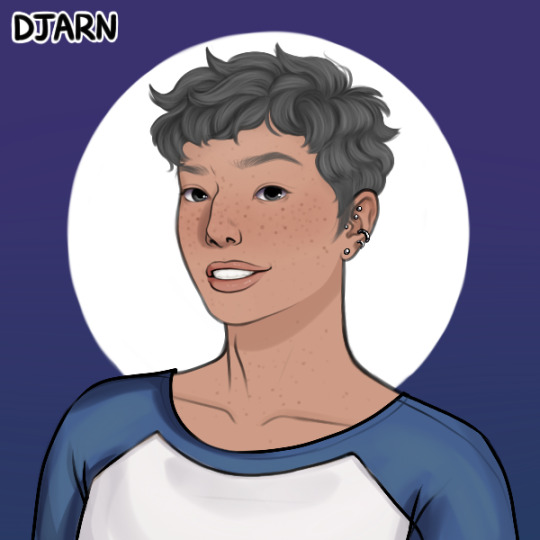
Five years younger than Katie. Has a sister younger than him in Apollo (Jackie) and they're pretty sure their younger sibling is also a demigod but is too young for camp. Explodes a torpedo that injures Katie when he’s ten. Can both fuse and defuse any bomb
Other Demigods:
Jacqueline (Jackie) Ray Steel:

Gus’s younger sister (by two years). Has healing powers and is fascinated by blood. Becomes an apprentice under Will and Alex. Has some kind of blood-bending phlebotomist power
Draco Steel:
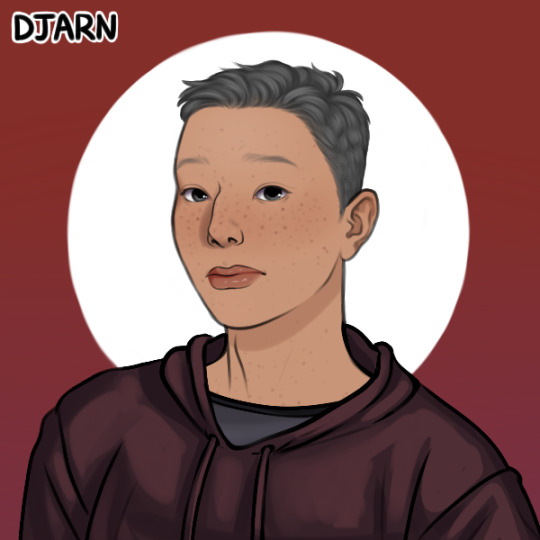
Jackie and Gus’s younger brother (4 years younger than Jackie, 6 years younger than Gus) unclaimed
Alex Vlahos:

Will’s head apprentice since they were 13, child of Apollo, they will take over when Will retires. Nonbinary, two years older than Katie. Japanese and Greek, kinda built like a swimmer. Becomes close to the di Solaces because of their position in the infirmary, and acts like an older sibling to Katie when she's younger. Katie has a lot of respect for them. Simon and Alex end up together
August:

Friend of Katie’s, daughter of Hecate, one year older than her. Both like sci-fi novels. Dies in a quest Katie helped prep for (when Katie is 14)
Justin:
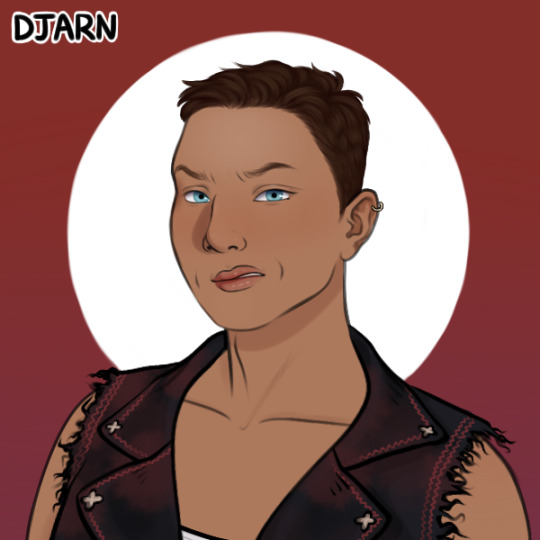
Son of Nike, Katie kicks his ass his first week because he tried to play macho and broke Colton’s nose. They make up when he starts dating August, the other person to die on that quest (when Katie is 14)
Richard Gibson:
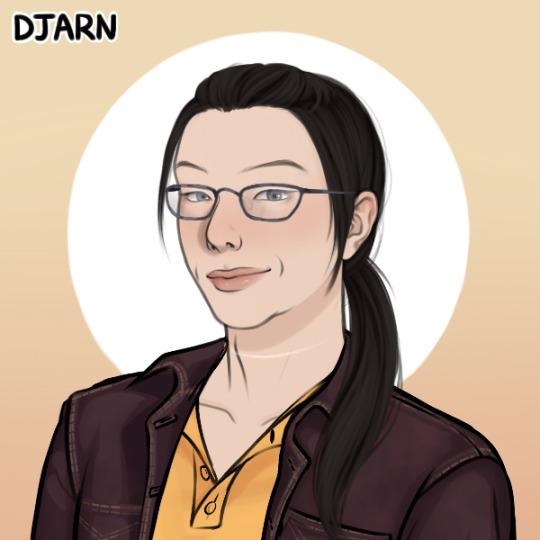
Son of Athena, in his mid-50s and the year-round school teacher for the kids at camp. Used to teach high school Social Studies in Colorado, the second person the Stolls recruited for The Program after Will. Kids call him 'Mr.G' or 'Mr.Gibs', wears hair in a ponytail
Marigold:

Daughter of Hecate, two years older than Katie. Specializes in magical tattoos. The one who always puts on anime during movie night
Rose and Myrtle (the Aphrodite twins)
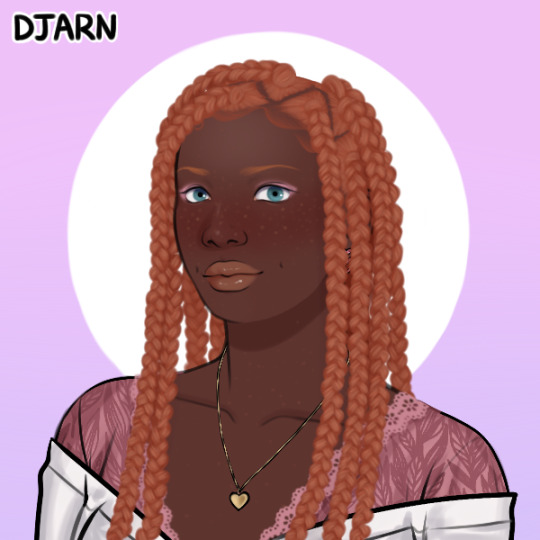

Twin daughters of Aphrodite, the youngest kids at camp until the Steels. Very quiet girls for a long time, twin telepathy to the max. they end up with a very successful hair and makeup makeover YouTube channel (Property Brothers style) that gets turned into a Netflix show
Carlos:

Colton’s future husband, is bi and Mexican. Roman, a descendent of Epona, meets Colton during his second time in the Olympics (Colton in track and Carlos in equestrian, their rooms were next to each other). Emotionally intelligent, has four horses (each is named after a cookie. Oreo, Snickerdoodle, Chocolate Chip (Chippie), Oatmeal Raisin (Raisin)). Thinks Hazel is the coolest, a little bit of hero worship there because of Airen, works with and is heir to the Roman Calvary (their family runs the stables)
Rosa:
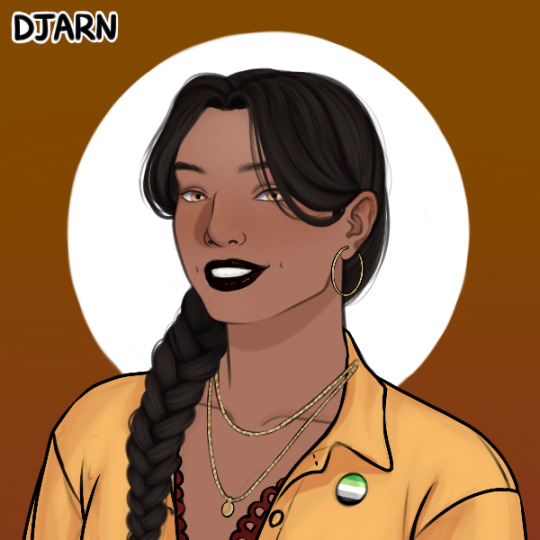
Carlos’s older sister, aromantic. Also works with and is heir to the Roman Calvary
Katie's Bio Family:
Christopher (Chris) Fiodoir:
Katie’s bio dad, the second oldest of five. Has a goatee and a mullet ponytail, Katie looks a lot like him, especially in the eyes. Props Master for a theater in Washington DC. Died brutally in front of Katie by being ripped to shreds and eaten by Cyclops
Maria Fiodoir:
Katie's bio grandmother and priestess of Athena. Master fiber artist and last living bio family Katie remembers. Katie is her spitting image. Taught Katie to sew and other fiber crafts when she would stay over during hard tech weeks. Would have groomed Katie as next to hold the vigil, was already starting to when her son died
Kathy (Katherine) Fiodoir:
Katie's great aunt, her grandmother's sister, they were raised as twins. A gift to the family made from fiber craft by Athena. Was pressured into becoming the single maiden priestess to Athena, to single-handedly keep the family vigil. Ended up getting in so deep she wove herself into the vigil tapestry on the family loom
Olive Fiodoir (Tanner):
Katie’s aunt. Her dad's youngest sibling and only sister. No one’s sure how human she is, but her gender was prompted by Athena so that there would still be a maiden to take up the vigil. Is somewhat sensitive to magic because of this. Olive rejected her birthright, married, and had a son
Original Mortals:
Oscar Brown:
Colton’s human dad. A nonverbal autistic man, special interest in buses. Drives a school bus, is the best at driving school buses, how he caught the eye of Hermies. The man is barely verbal but he has the most rizz of anyone in the series
Elane Brown:
Colton’s Abuelita, all around badass woman. Immigrated to America from Cuba with nothing but her nonverbal gay autistic son. Opened a hair salon in Orlando Florida where she employs women who are immigrating with their children alone, huge autism advocates, and all-around badass. Colton kept her name as his middle name, he thinks she’s the best
Grace Thatcher:
Lettie’s human mom. Poet, teaches poetry and creative writing at SCAD. Poet Laurent for GA at one time, wrote a poem about wheat that wooed Dameator. Very crunchy and hippy, but a good mom. Homeschooled Lettie, her homeschooling made it so Lettie can spend half of the year at camp (spring and summer).
Olivia:
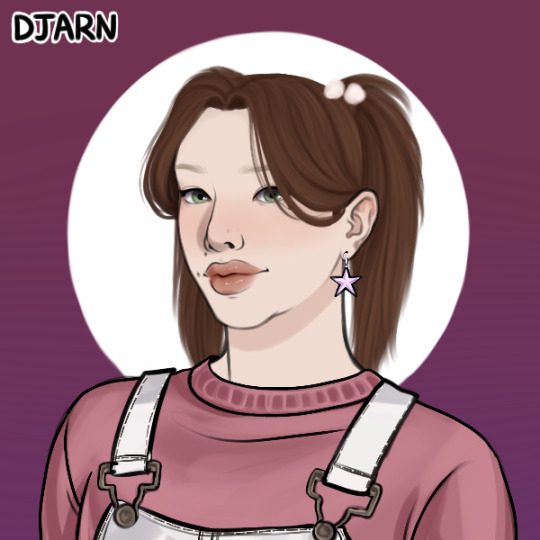
Katie’s frienemie from when she was in mortal school. Cheated in the science fair so badly that Katie’s powers over scale manifested for the first time, combined with Leo, and exploded her paper mache volcano in her face. Lost her eyebrows in the explosion, they never grew back right.
Martha (Mars):
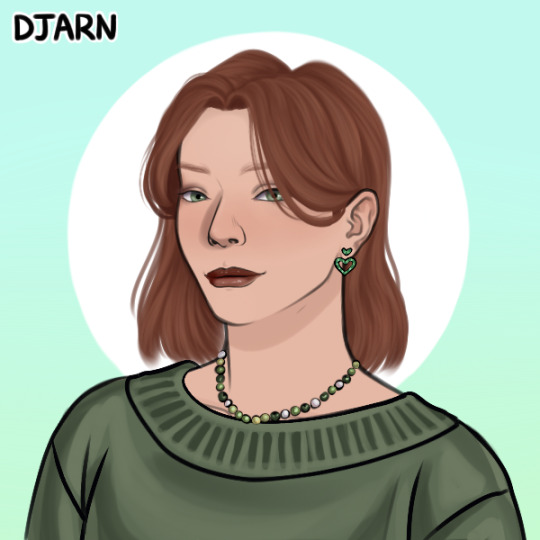
Colton’s high school girlfriend, is also in track. They break up before college right after Colton qualifies for the Olympics
Others:
George the Real Human Skull:
A real human skull that is Katie's main comfort item. Was a garment worker during the Gilded Age of NYC, and now gets slept with by an adolescent demigod
Skeletor:
Katie's borse (bone horse). Gift from Hades for her thirteenth birthday, can breathe fire out his nose. Carnivore, hates everyone but Katie, Reyna, and Hazel and shows this by trying to eat them. Has to live in Hades's stables because of how much he loves to murder but Katie has a whistle to summon him
Janet:
Katie and Nico’s ghost secretary, takes calls and does bureaucratic and paper-pushing things for them on the Otherworld side. From the 1970s, died from a drug overdose and is working off some time for a better afterlife. Huge gossip
The Bonsai’s:
A dryad biker gang that have bonsaied their trees into their sidecars. Because they are bonsais many of there limbs are disfigured so they all have at least one prosthetic. Lettie is friends with them
5 notes
·
View notes
Photo
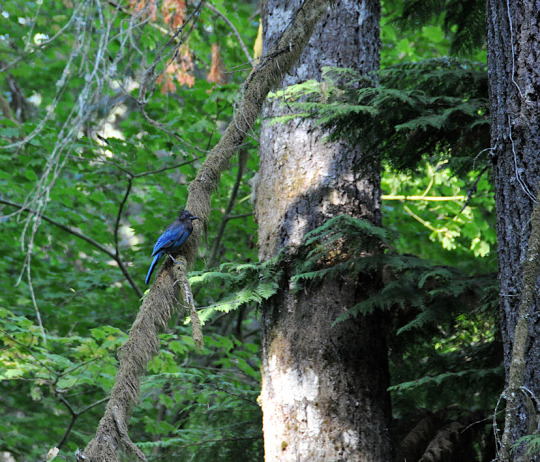
One of the neighbours out enjoying the sunshine.
#the neighbours#wildlife#steller's jay#blue jay#Pacific NorthWest#9-2021#original photo#photozoi#doug fir#woods
13 notes
·
View notes
Photo

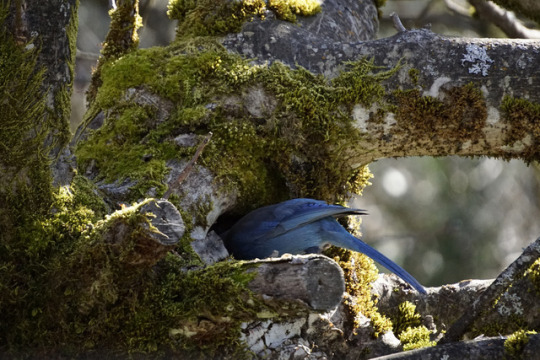
Steller’s Jay looking for a hidey-hole ~ Eileen Kitayama 2017
#photographers on tumblr#original photographers#wildlife#wildlife photography#bird photography#nature#outdoors#animals#bird#birds#corvids#caching behavior#animal behavior#food storage#hoarding#steller's jay#forest#woods#mossy forest#mossy tree#mossy things#birding#ornithology#wildlife biology
257 notes
·
View notes
Text
Doggary Forest, Pacific Northwest, United States ~ 2018
The vile stench overwhelmed her senses. Never had she smelled anything so foul. She realized that her elders prophecy of her flying into trouble that could end her life may be this day. She had followed the stench looking for its origin, even though she knew she was in forbidden territory. She believed the elders made up the fairytale of Trolls. There were no more Trolls in the modern world. Everyone knew the Trolls had been defeated 200 years ago at the Battle of Mount Hood. There was something very wrong in this part of the forest.
Dogarry Forest seemed off. The forest was silent. No calls of the birds. No scampering and rustle of ground leaves as chipmunks and squirrels hopped over them. She flew into the open end of a rotted, moss and fern covered log and peered from the dark interior through a smaller hole in the log. She could feel the vibration first. Then a slow and steady thump and crunch of trees and plants being squished under a very heavy tread. A grotesque and ginormous image appeared down Balch Creek. She had never seen one, but it could only be a Mountain Troll!
The steady, crushing pace continued toward her! She was frozen in disbelief. As the Troll raised his leg the stench almost caused her to pass out. Fortunately, it did jolt her senses enough to get her flying out from the log, out of the path of the Trolls giant foot, and under the safe coverage of a moss-covered stone near the creek. She peeked around the stone as the Troll continued down the creek. Should she follow the Troll? Her legs had not stopped shaking and even her wings felt limp.
This is one time she knew she was over her head. She did not know how many Trolls had survived if they had traps set in the forest, but she knew whatever they were up to would not be good for the forest. She knew the code of the Dogarry Forest Fairies, “Protect the forest, animals, plants, and humans that appreciated the woods and trails. And, “Do no Harm.” That had been a hard lesson she had learned as a wee faerie. She had been too young to understand that changing winter colors of the plants and flowers of the forest to pretty spring and summer colors damaged the plants’ natural rhythms. Even though it was prettier it was not natural or healthy for the plants. She was sure the Troll did not understand the forest codes. She shook herself, spread her wings, lifted her chin and shoved off from the Forest Floor.
“Raaaach!” Screeched Jay...the Steller Jay, “You are so in trouble! The elder has been asking where you are, and already believes you have done something forbidden. Of course, I told her that you would never go that far? Tell me you did not go that far, Wild Rose?” Jay followed his rambling with a typical Steller Jay aggrieved noise…chk, chk, chk, chk…. He looked closer at her appearance and noticed the forest debris clinging to her long red curls, the torn sleeve and freckles sticking out on a very pale face.
“It’s WR, please. You know I hate to be called Wild Rose.” She quickly changed topics and asked in an offhand way, “Have you flown over Balch Creek lately?”
“Gobber shnots, no! That is Fairy Area 51! No one is allowed past the ravine! The elders must know you have been out there. I bet one of the black crows ratted you out. You know you can’t trust a crow as far as you, oh never mind. Raaaacht,”
“I did not say I was at Balch Creek, just wondered if you had seen or, WR paused, smelled something.”
“We have been friends since you were first found and brought to the forest. We have practically grown up together. There is nothing you can hide from me. We have gotten into and out of trouble and I know your trouble face! Do not try to disassemble your story to me, it would be an insult to our friendship.” Jay looked at her with concern. “What has happened?”
The sun was cutting through the mist turning Dogarry Forest into an “enchanted” land, usually a time of day she cherished. Wild Rose loved the early mornings before the other fairies were out and about. It was the time of day she could do what she wanted without comment. Unfortunately, this day she knew there would be comments aplenty.
“I saw a Troll!”
“No way!” Screeched Jae
“I was on my early morning flight, you know how much I enjoy that time of day. I wasn’t paying attention, just enjoying the forest when I smelled something horrible. It was just wrong and did not belong in the woods. I wanted to know what it was and followed the stench. I knew I was heading into forbidden territory, but I felt it was important to find out what was going on. As the stink began to make me nauseous I heard and then saw a Mountain Troll. They are worse than you can imagine Jay.” Said WR.
“We should hurry to the council house. We need to let the elders know what has happened. You may get into trouble, but I agree with you that it was important that you followed your fairy sense and discovered this atrocity.
1 note
·
View note
Photo




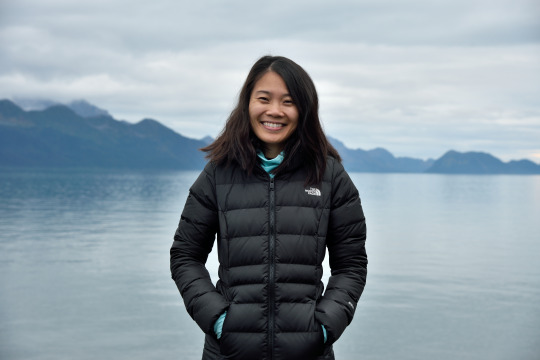
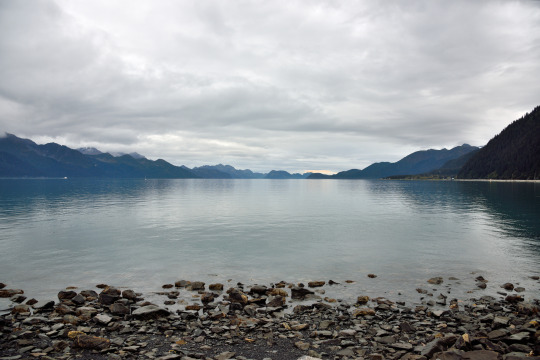

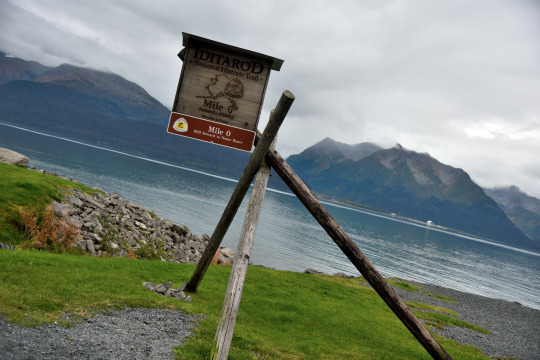
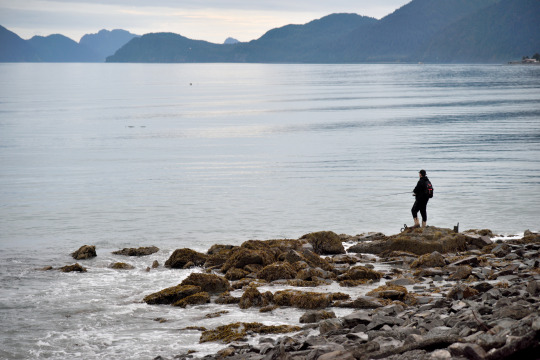
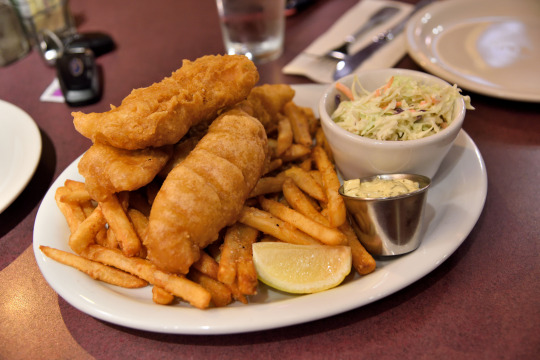
September 20th, 2020
Day 7: Taking It Easy From Girdwood to Seward
This morning, we woke up and made the most out of our late check-out by lazing in bed, watching some football (and the always disappointing Atlanta Falcons), and slowly getting ready for the day. We checked out of Alyeska around noon and stopped at a nearby restaurant called Spoonline for brunch. Their brunch was pretty good. We had their breakfast burrito with sausage and veggies as well as their baked French toast with oranges and blueberry. A nice meal to propel us into our road trip down to Seward.
Before we left Girdwood, we took one last look around the area and strolled along the street on which the restaurant was located. We checked out the Crow Creek Mercantile, a really cool, old fashioned-looking general store which was really just a Safeway on the inside of an old general store. It was pretty neat that they kept the same general store feel there despite it being much more than an old corner store. After that, we walked around the area a little more before riding back toward the resort, where we did a quick stroll around the resort grounds before heading off toward Seward.
The ride to Seward was particularly leisurely, even though the trip itself was quite short. We made a couple of stops to take photos but that was about it. We eventually made it to our nice, cozy little cabin, where I spent the first hour enjoying the epic NBA WCF Game 2 between the Lakers and Nuggets that ended with a buzzer beating 3-pointer by AD! So epic! What a game!
But anyhow, back to the cabin. It really was a cute, cozy little cabin in the woods. The cabin was one of four cabins built on some lady’s property for the purpose of renting out to guests. The area inside the cabin was pretty small and you had to make the most of the limited space you had inside but overall, there was enough space to have a comfortable stay. It was like a little studio apartment. The main room had an area for the bed, enough space for a little table, as well as a kitchenette area. The bathroom had all you needed too, including warm water for showers. There was a gas heater that warmed up the cabin pretty well. And there was a nice little deck outside with a table and two chairs if you wanted to enjoy some fresh air outside.
After settling into our cabin, we drove into nearby Seward to check out the town before it got too dark. We parked near Resurrection Bay and Waterfront Park and walked along the bay, taking in the views there, every now and then catching a seal or sea lion poke its head out of the water right off the shore. We spent a lot of time reading the informational signs located along the walking path, learning about the animals in the area as well as the history of the area.
As the evening approached, we made our way back to the car to figure out what we would do for dinner. At first, we decided to try Exit Glacier Salmon Bake, a restaurant located just outside of town. However, once we arrived there, we realized that their Google Maps page wasn’t updated and that they were closed for the season. We were bummed because their baked salmon looked so good! Instead, we looked through our options again and decided to check out The Highliner Restaurant before they closed for the night. Once we got there, we had to deal with a series of long waits before we were finally able to order and then eat our fish (halibut) and chips with sweet potato (and regular) fries and coleslaw as well as our buttermilk fried chicken with whipped potatoes. The food was good and plentiful but just a TAD on the heavy and oily side. When we were done eating, we had so much leftover fried food that we reluctantly packed it to have as a meal tomorrow. Whew, good but heavy.
On the way back to the cabin, we stopped by Safeway to buy groceries in preparation for tomorrow’s big hike. Once we were done, we just went back to the cabin to chill the rest of the evening knowing that Cynthia had an interview early in the morning tomorrow and we had to refuel ourselves before going on an 8-10 mile, daylong hike tomorrow. Excited for it though!
5 Things I Learned/Observed Today:
1. There are lots of murals that have been painted throughout the little town of Seward. If you walk around, you’ll see many different types of murals painted on the outside of buildings. A really good way to walk around and see town.
2. What does “Cheechako” mean? Well, we looked it up and apparently, it is used to describe a newcomer to Alaska or the Yukon but originally, it was meant for a gold rush newcomer who had just arrived in the mining areas of Alaska or the Yukon.
3. Whew, seafood sure is expensive to a commoner like me traveling in Alaska. Maybe it’s just me not ordering seafood that often but prices seem to mostly be $30+ for a good seafood entree. Also, of note, halibut is not cheap either. It’s usually the most expensive type of white fish for fish and chips (at least on the menus I’ve seen).
4. Resurrection Bay is full of wildlife! Some of the animals there include the black-legged kittiwakes, the harlequin ducks, humpback whales, killer whales, sea otters, harbor seals, and Steller sea lions. Wish we had time to see them all!
5. Because Resurrection Bay had a natural ice-free harbor where people could ride a ship into and land, it was an excellent area for folks back in the day to start their explorations of the area. As a result, in 1895, a network of trails (pack and sled trails, wagon roads, and railroad beds) were developed and paved starting at this location that became famously known as the Iditarod Trail. This landing spot later became officially known as Seward in 1903.
#huyphan8990#withabackpackandcamera#travelblog#travel#blog#Girdwood#Seward#Alaska#UnitedStates#Fall#Autumn#September#2020#COVID#roadtrip#ResurrectionBay#fallcolors#aspens#railroad#landscapephotography#travelphotography#fishandchips#halibut#Iditarod Trail#cabinlife#worldtravels
0 notes
Text
Life on Earth may have begun in hostile hot springs
At Bumpass Hell in California’s Lassen Volcanic National Park, the ground is literally boiling, and the aroma of rotten eggs fills the air. Gas bubbles rise through puddles of mud, producing goopy popping sounds. Jets of scorching-hot steam blast from vents in the earth. The fearsome site was named for the cowboy Kendall Bumpass, who in 1865 got too close and stepped through the thin crust. Boiling, acidic water burned his leg so badly that it had to be amputated.
Some scientists contend that life on our planet arose in such seemingly inhospitable conditions. Long before creatures roamed the Earth, hot springs like Bumpass Hell may have promoted chemical reactions that linked together simple molecules in a first step toward complexity. Other scientists, however, place the starting point for Earth’s life underwater, at the deep hydrothermal vents where heated, mineral-rich water billows from cracks in the ocean floor.
As researchers study and debate where and how life on Earth first ignited, their findings offer an important bonus. Understanding the origins of life on this planet could offer hints about where to search for life elsewhere, says Natalie Batalha, an astrophysicist at the University of California, Santa Cruz. “It has very significant implications for the future of space exploration.” Chemist Wenonah Vercoutere agrees. “The rules of physics are the same throughout the whole universe,” says Vercoutere, of NASA’s Ames Research Center in Moffett Field, Calif. “So what is there to say that the rules of biology do not also carry through and are in place and active in the whole universe?”
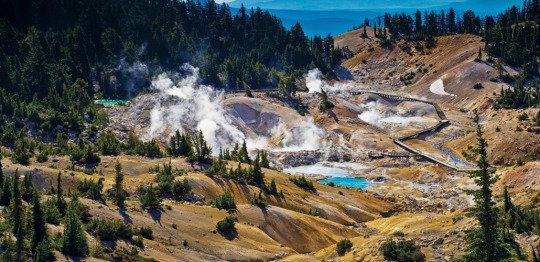
At Bumpass Hell hot spring, cycles of wetting and drying at the edges of the geothermal pools are thought to promote the assembly of biomolecules.Joe Benning/Alamy Stock Photo
Lure of the land
At its biochemical core, the recipe for life relies on only a few ingredients: chemical elements, water or other media where chemical reactions can occur and an energy source to power those reactions. On Earth, all of those ingredients exist at terrestrial hot springs, home to some hardy creatures. Great Boiling Spring in Nevada, for example, is a scalding 77° Celsius, yet microbes manage to eke out an existence in water near the spring’s clay banks, researchers reported in 2016 in Nature Communications. Such conditions may reflect what it was like on early Earth, so these life-forms are most likely “related to some of the organisms that were originally on this planet,” says Jennifer Pett-Ridge, a microbial ecologist at Lawrence Livermore National Laboratory in California.
Microorganisms at hot springs can form communities called microbial mats. Made up of layers of microbes, mats have been found in geothermal areas all over the world, including in Yellowstone National Park, the Garga hot spring in southern Russia and Lassen — home to Bumpass Hell.
Over time, microbial mats can form into stromatolites, structures of microbes and minerals that have accumulated on top of one another; the layered appearance of a stromatolite reflects the passage of time, like a tree’s growth rings. Researchers found evidence of stromatolites in the Dresser Formation, a 3.5-billion–year-old rock feature in the Western Australia outback, along with evidence of hot spring mineral deposits, describing the findings in 2017 in Nature Communications. These findings, plus other signs of past microbes, led the team to suggest that some of the earliest life on Earth flourished in a hot spring environment.
David Deamer, a biophysicist at UC Santa Cruz, has spent four and a half decades exploring how life on our planet may have begun. He started out studying lipids, oily molecules that make up the membranes surrounding cells. Deamer, a big proponent of hot springs as the source of life’s start, has shown that conditions at terrestrial hot springs can produce bubblelike vesicles, with an outer layer made up of lipids. Such structures may have been the ancestral precursors of modern-day cells (SN: 7/3/10, p. 22).
Bruce Damer, an astrobiologist at UC Santa Cruz who brings a computer science approach to questions about the origins of life, worked with Deamer to test whether conditions at hot springs could drive condensation reactions, which join two molecules into one larger composite.
When water splashes out of a hot spring and evaporates, molecules that were in the liquid could undergo condensation reactions and link up. A subsequent splash would add more molecules that could undergo additional condensation reactions as liquid dries again. Repeated rounds of wetting and drying could produce chains of molecules.
In 2018, Damer set up shop at an active geothermal area in New Zealand, named along the usual theme — Hells Gate — to test that hypothesis. He prepared vials with ingredients needed to assemble strands of RNA, a nucleic acid that acts as a messenger during protein synthesis and may have catalyzed chemical reactions involved in the origins of life on early Earth (SN: 4/10/04, p. 232). The concoction included two of the four RNA building blocks — the nucleotides that link together to form RNA chains.
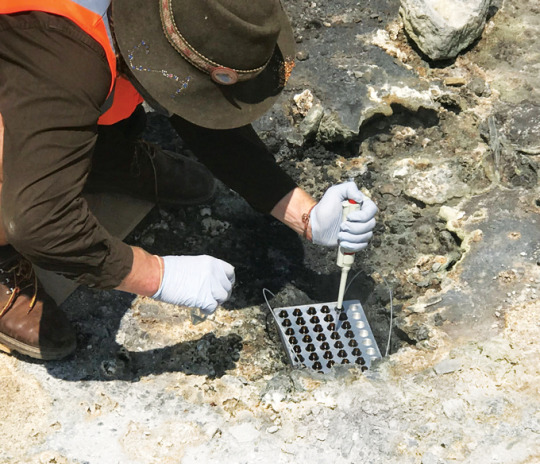
In February, astrobiologists Bruce Damer and Luke Steller (shown) performed wet-dry cycling experiments in acidic hot spring pools at Hells Gate in New Zealand.B. Damer
Damer stood the open vials in a metal block, roughly the size of two CD cases stacked together, and set the contraption into a near-boiling hydrothermal pool. To simulate the sometimes-wet, sometimes-dry burbling of the primordial Earth, Damer squirted acidic hot spring water into the vials, let them dry out and then repeated the wet-dry cycle several more times. When he brought the vials back to the lab, he found that they contained RNA-like strands that were 100 to 200 nucleotides long.
These results, reported in December 2019 in Astrobiology, indicate that complex molecules can form at hot springs, supporting the hypothesis that life on Earth may have developed in such an environment. In 2020, Damer returned to Hells Gate with Deamer and colleagues to confirm Damer’s results and do more wet-dry cycling studies.
Nicholas Hud, a chemist at Georgia Tech in Atlanta, studies the origins of life from a slightly different perspective: He explores how DNA and RNA nucleotides originated. He agrees that molecules are more likely to link together by condensation reactions on land, where wet-dry cycles can occur, than in the ocean. These reactions produce water; the formation of such a chemical bond isn’t energetically favorable when there’s already a lot of water around. “The best place to form that is in a hot, dry place,” Hud says. “The worst place to form it is in a wet, hot place.”

Bruce Damer has visited Hells Gate in New Zealand twice to test whether the conditions are right for linking nucleotides into strands of RNA.Joshua Hawley/iStock/Getty Images Plus
Underwater visions
Yet, wet, hot environs are just the place for life to originate, other evidence suggests. At hydrothermal vents on the deep, dark ocean floor, heated water spews into seawater that’s just a few degrees Celsius above freezing (SN: 7/23/16, p. 8).
In 2017, researchers found fossils in 3.77-billion-year-old rocks from Quebec that originated from the ancient ocean floor and had signs of hydrothermal activity (SN: 4/1/17, p. 6). The researchers claim that the distinct structures resemble those of microbes, suggesting that deep-sea environments may have supported some of the earliest life on Earth.
These environments can be extreme: Some vents belch dark plumes of water as hot as 400° C. However, if vents played a role in nurturing early forms of life, it likely happened at milder vents. For example, Lost City is a hydrothermal area in the middle of the Atlantic Ocean where the fluid streaming from vents ranges in temperature from 40° to 90° C. The region is named for dramatic limestone chimneys that rise as much as 60 meters above the seafloor.
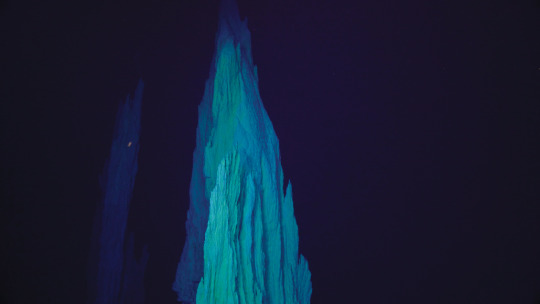
The chemistry of vents like the limestone chimneys found at the Atlantic Ocean’s Lost City supports microbial life.Courtesy of Susan Lang/Univ. of S. Carolina, NSF, ROV Jason/2018 © Woods Hole Oceanographic Institution
These spires are home to microbes that feed off the products of a chemical reaction known as serpentinization. “Hydrothermal vents are interesting because they are at the interface of water and rock,” says astrophysicist Laurie Barge of NASA’s Jet Propulsion Laboratory in Pasadena, Calif.
A chemical reaction between water and rock at sites like Lost City makes the water coming out of vents more alkaline than the water in the ocean, which has a higher concentration of positively charged hydrogen ions. The resulting gradient from alkaline to more acidic water is like the difference between the positive and negative ends of a battery and can serve as an energy source for chemical activity.
To study the conditions at underwater vents, Barge creates simulated environments in the lab that, she says, “can mimic what you see in the natural world.” To represent an ocean on early Earth, she fills an inverted glass bottle with an acidic mixture containing iron but no oxygen. One end of a plastic tube pokes through the narrow end of the bottle, connected to a steady supply of a basic, or alkaline, solution just like a vent.

NASA’s Laurie Barge simulates an alkaline hydrothermal vent in an acidic ocean to explore the chemistry of ancient oceans. The conditions produce chimney structures like the one above. JPL-Caltech/NASA
When Barge and colleagues injected an alkaline vent solution containing RNA nucleotides into an ocean-simulating bottle, individual RNA nucleotides linked up into short chains. These strands were only three or four nucleotides long, but the results suggest that the conditions at deep-sea vents could have supported reactions that led to the emergence of life on Earth, the researchers proposed in 2015 in Astrobiology.
Problems with both
To Deamer, there are big barriers to putting life’s pieces together near underwater vents: The vastness of the ocean would dilute molecules so they wouldn’t be concentrated enough to drive chemical reactions. Also, there are “no wet-dry cycles underwater.” In his view, repeated evaporation is needed to pull together enough molecules to bump into each other and react to form longer chains. Plus, unlike a hot spring’s freshwater, salty ocean water inhibits the formation of membranes and reactions that link together molecules, he says.
However, Deamer’s hot springs theory has its critics as well. DNA and RNA strands are composed of alternating phosphate and sugar molecules, but sugars “are profoundly unstable in hot spring environments,” says David Des Marais, an astrobiologist at NASA’s Ames Research Center.
And it may be too soon to rule out wet-dry cycles underwater. “You can have a little bit of water get stuck in a pore,” says Bill Brazelton, a marine microbiologist at the University of Utah in Salt Lake City. And then, because the serpentinization reaction at a vent uses up water in making other molecules, “you can have these cycles of dehydration inside a rock underneath the ocean.”
It may be impossible to nail down how life truly began on Earth: Most geologic records of what actually happened during Earth’s earliest days have long disappeared. There are numerous alternative hypotheses for where life began, beyond terrestrial hot springs and deep-sea vents. Recent research, for example, suggests that asteroid impacts could have sent superheated seawater into the crust to produce hydrothermal systems resembling hot springs (SN: 7/4/20, p. 10).
“I think we have to admit that there might be more than one little torturous path that might have been traversed in order for life to begin,” Des Marais says.
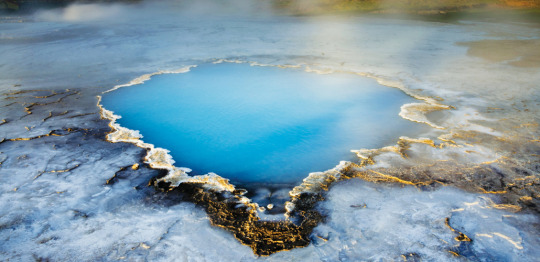
The Bláhver hot spring in Iceland is one of many locations that Bruce Damer and David Deamer argue are the kind of environment where life may have formed on early Earth.imageBROKER/Alamy Stock Photo
Life beyond Earth
Researchers are using what they’ve learned about how and where life may have originated on Earth to guide the search for biological signatures beyond our planet. There are several promising locales in our solar system.
“One of the things that NASA is really interested in knowing is whether or not there could be life in the subsurface oceans of the icy moons, like Europa and Enceladus,” says Batalha, of UC Santa Cruz. Scientists have evidence that the two moons, one orbiting Jupiter and the other, Saturn, have oceans of salty, liquid water beneath their icy shells (SN Online: 6/14/19).
These moons are intriguing because, along with liquid water, both have plumes of water erupting from their surfaces (SN: 6/9/18, p. 11), suggesting ongoing hydrothermal activity. NASA’s Cassini space probe even identified compounds containing carbon, nitrogen and oxygen within Enceladus’ plumes, some of the ingredients of amino acids, the building blocks of proteins. Europa and Enceladus fascinate astronomers because activity on their ocean floors may resemble the hydrothermal vents found on our own planet and may provide the chemical conditions to support life (SN: 4/18/15, p. 10).

Plumes of water vapor, plus compounds containing carbon, nitrogen and oxygen, spew from the frozen surface of Enceladus, a moon of Saturn, as captured by NASA’s Cassini spacecraft. Hydrogen in the plumes is evidence of hydrothermal activity in the ocean beneath the ice, similar to deep-sea vents on Earth.JPL-Caltech/NASA, Space Science Institute, Planetary Science Institute
Icy moons may also promote condensation reactions. “Even if you were on an icy moon, you might have … freezing and thawing of ice,” Barge says. “So, I think it’s important to say, if wet-dry cycling is important, then we should look for any environment in the solar system that might be able to promote oscillating conditions of dehydration.”
But to find signs of past life, Damer and Deamer believe Mars is a more promising place to look. Mineral deposits indicate the presence of hot springs and hydrothermal activity in the planet’s past, which would have sustained the wetting and drying cycles that the two researchers see as crucial for condensation reactions to get life going.
Missions to the Red Planet are already under way. NASA’s Perseverance rover will be searching for signs of ancient life, such as telltale minerals in rock samples, at Mars’ Jezero crater when the mission lands in February 2021 (SN: 7/4/20 & 7/18/20, p. 30). Though at least 54.6 million kilometers separate them, Mars and Bumpass Hell may not be so different.
from Tips By Frank https://www.sciencenews.org/article/life-earth-origins-hostile-hot-springs-microbes
0 notes
Text
Cyanocitta cristata, C. stelleri
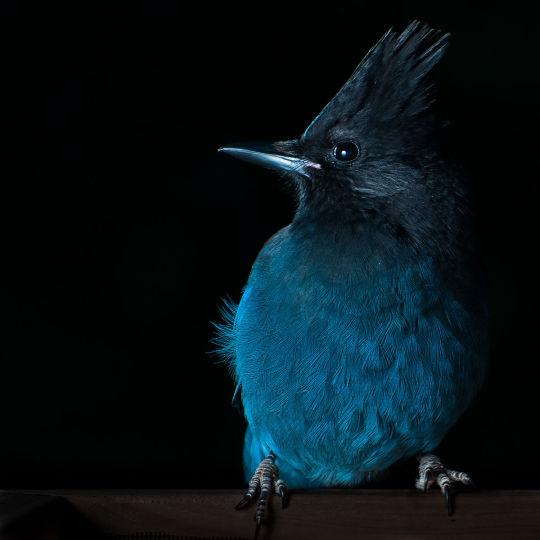
Steller’s Jay, by Remandsager, CC BY-SA 3.0
PLEASE SUPPORT US ON PATREON. EACH and EVERY DONATION helps to keep this blog running! Any amount, even ONE DOLLAR is APPRECIATED! IF YOU ENJOY THIS CONTENT, please CONSIDER DONATING!
Name: Cyanocitta cristata, C. stelleri
Status: Extant
First Described: 1845
Described By: Strickland
Classification: Dinosauria, Theropoda, Neotheropoda, Averostra, Tetanurae, Orionides, Avetheropoda, Coelurosauria, Tyrannoraptora, Maniraptoriformes, Maniraptora, Pennaraptora, Paraves, Eumaniraptora, Averaptora, Avialae, Euavialae, Avebrevicauda, Pygostylia, Ornithothoraces, Euornithes, Ornithuromorpha, Ornithurae, Neornithes, Neognathae, Neoaves, Inopinaves, Australaves, Eufalconimorphae, Psittacopasserae, Passeriformes, Passeri, Corvida, Corvoidea, Corvidae
Can’t have a week of favorite birds without having a Passerine - and since I already did Corvus for Dinosaur March Madness 2016, here is my second favorite member of the most diverse Dinosaurian Group - the Blue Jay! There are two species in this genus, the Blue Jay and the Steller’s Jay, and while they look fairly different from one another, they also have non-overlapping ranges, so it’s usually very easy to figure out which one you’re looking at. The jay does have a bit of a fossil record, with fossils of the genus known from around 4.75 million years ago, in the Zanclean age of the Pliocene of the Neogene. Given that its family proper evolved in the mid-Miocene, this would indicate that the Pliocene is indeed when this genus first originated.

Blue Jay, by Mdf, CC BY-SA 3.0
The more famous species in this genus, C. cristata, is the Blue Jay. It is not threatened conservationally, and is very common throughout its range. It has a very large range, from the Eastern Coast of North America, to around Alberta, Canada and Montana, USA. It doesn’t extend further south than New Mexico, Texas, and Florida, so it isn’t found much in Mexico. It only really is in Canada during its breeding season, and is only found in Idaho during the Winter, though it can be found in some portions of Canada year-round, and the rest of its range is year-round as well. It is extending westward a little, so it has been seen on the Pacific coast, but not frequently. This extension into the range of the Steller’s Jay, its sister species C. stelleri, has even lead to some hybridization between the two.

By Dick Daniels, CC BY-SA 3.0
The bird can be migratory or not, depending on the subspecies and location in which it lives, though their migratory patterns still largely remain a mystery. They likely migrate due to weather conditions and sources of foods. They live in a variety of habitats, such as mixed woodlands, pine woods, and spruce-fir forests, though it prefers less dense forests. It does adapt well to human activity and can be found in parks and residential areas. They feed on nuts, corn, grains, and seeds, which it finds on the ground and in trees, along with berries other types of plant materials. They can store food, and they frequently visit bird feeders, though many types of animals prevent Blue Jays from feeding at feeders (such as squirrels, scrub-jays, grackles, and woodpeckers).

By Saforrest, CC BY-SA 3.0
It is a noisy and aggressive bird, making a large variety of sounds that can vary from individual to individual. They can even mimic human speech, as well as the cries of local hawks. They will often create a high pitched jayer-jayer call that increases in speed as it gets agitated, and they can use the calls to band together and mob predators and drive them away from nesting sites. They have quiet calls used amongst other members of the species, including one that sounds like a rusty water pump. They fly rather slowly, only about 32 to 40 km/h, but it can chase predatory birds and intimidate them with screaming to get them out of their territories. It also is often aggressive towards humans that come close to the nest, and will mob owls and other birds for being near their nests or roosting near them. They also chase away other birds from feeders.

By Glunardi, CC BY-SA 3.0
They are very curious and intelligent birds. The young steal brightly colored and reflective objects and carry them around, and in captivity they use newspaper to get food. They have a mating season that begins in mid-March and extends into July, and they nest in trees such as evergreens, creating cup-shaped nests of twigs, roots, moss, and other plant material. They even use mailboxes to nest in if no trees are readily available. The birds form monogamous pair bonds for life, with both members of the pair building the nest and rearing the young. The female sits on the eggs as the male gives her food.

By Jeff the Quiet, CC BY-SA 3.0
The babies are helpless and hatch after 18 days, becoming more independent 17 - 21 days after hatching. The family travels together and forages togehter until the fall, when the young birds leave to avoid competition. They look grey as babies before developing the blue wing, back, head and tail feathers characteristic of the adults. They are sexually mature after one year. In the wild, they usually live about 7 years, though in captivity they can live up to 26 and have been found to be up to 17 in the wild.
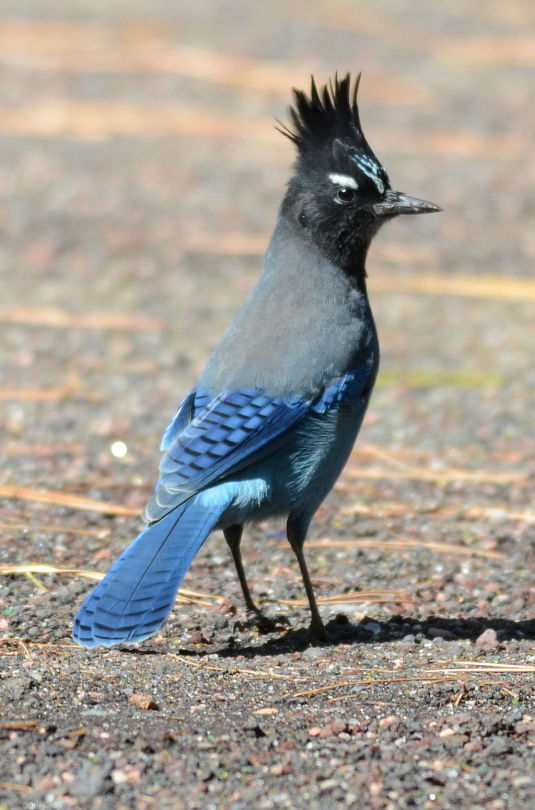
Steller’s Jay, By Noel Reynolds, CC BY 2.0
The Steller’s Jay, C. stelleri, is found on the Pacific coast of North America, as opposed to the original range of the Blue Jay. It looks similar to the Blue Jay, except with different patterning on its wings and tail, and with blue feathers on its underside and grey feathers on its back and head, rather than the blue on the back and head and white on the underside of the Blue Jay. It lives up to Alaska, down the Western coast of Canada and America, and even extends into Mexico and Central America. It is the only jay with a crest west of the Rocky Mountains, and though its range is not as wide as the Blue Jay (though much longer), it is not of concern in conservationist circles.
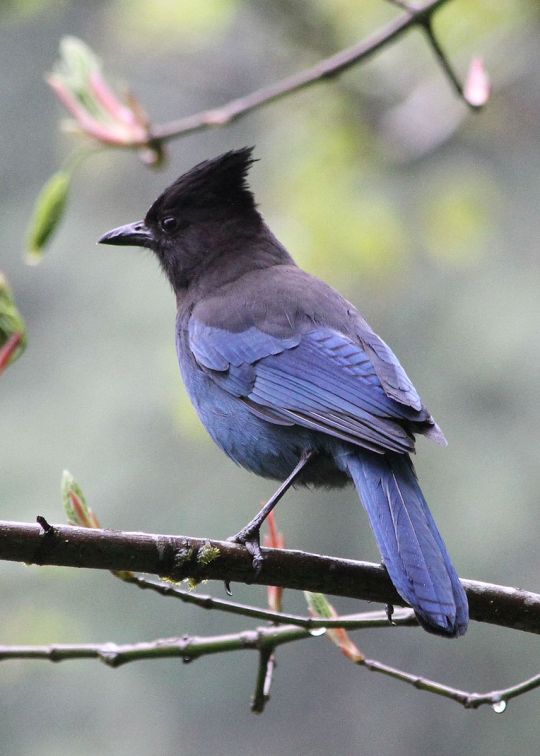
By Kathy Munsel, CC BY-SA 2.0
It varies in its coloration throughout its range, with blackish-brown-headed birds in the north and more blue-headed birds in the south. It has a larger crest than the Blue Jay and a more slender bill. It is also larger, about 29 cm long. It lives in coniferous forests and low to moderate elevations, and is also commonly found in agricultural areas. It feeds on both plant and animal matter including seeds, nuts, berries, fruits, invertebrates, rodents, eggs, and even nestlings, as well as reptiles. They eat mainly acorns and conifer seeds when not breeding, and will scavenge on picnics and camp sites, as well as eating at bird feeders.

By Walter Siegmund, CC BY-SA 3.0
They nest in conifers or tree hollows, and they construct nests similar to that of the Blue Jay, though they’re usually larger. They use natural materials, trash, and mud to build their nests, and lay two to six eggs. The eggs are incubated by the female for 16 days, while the male feeds the female. They are usually lourd birds, with numerous and variable vocalizations, such as a harsh SHACK-Sheck-sheck-sheck-sheck-sheck, and also soft hoodle hoodle calls, though they’re quiet while they nest. They have a harsh alarm call of wah. They can mimic other birds and animals, including hawks and ospreys, tricking other birds to seek cover and hide. Like the Blue Jay, it is a clever animal.
Sources:
https://paleobiodb.org/navigator/
https://en.wikipedia.org/wiki/Corvidae
https://en.wikipedia.org/wiki/Cyanocitta
https://en.wikipedia.org/wiki/Blue_jay
https://en.wikipedia.org/wiki/Steller%27s_jay
https://www.nps.gov/brca/learn/nature/stellersjay.htm
Shout out goes to @a-host-of-serpents!
#cyanocitta#blue jay#bird#steller's jay#dinosaur#jay#birblr#palaeoblr#a-host-of-serpents#cyanocitta cristata#cyanocitta stelleri#dinosaurs#biology#a dinosaur a day#a-dinosaur-a-day#dinosaur of the day#dinosaur-of-the-day#science#nature#factfile#Dìneasar#דינוזאור#डायनासोर#ديناصور#ডাইনোসর#risaeðla#ڈایناسور#deinosor#恐龍#恐龙
171 notes
·
View notes
Text
10 Book Recommendations for Earth Day (2017)
I’m doing something special because today is Earth Day and I can’t attend March for Science. As you may or may not know, I’m working toward a degree in Marine Science with a minor in Biology and focuses in Conservation and Ecology. The big thing I want to do with my knowledge is to help coral around the world, whether it’s to help build or protect more reefs, get into aquaculture, or educate people at aquariums. There’s a lot of information being thrown around by everyone and their mother about whether or not climate change exists or opinions on conversation in general. A lot of ecofriendly or eco-conscious people want to help but don’t know what to do, where to start, or who to listen to. Below I have listed a bunch of books by environmentalists, conservationists, and other people of science so that you may be able to get a sense for yourself as to what to believe and do. (Sorry in advance if the pictures are in poor quality)
1. Silent Spring by Rachel Carson
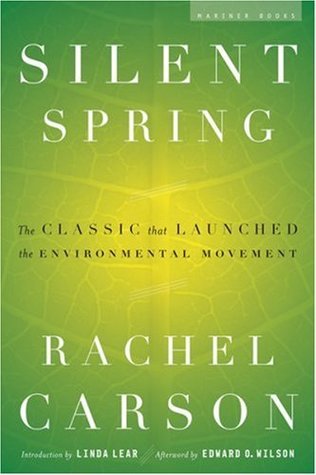
Rachel Carson’s Silent Spring was first published in three serialized excerpts in the New Yorker in June of 1962. The book appeared in September of that year and the outcry that followed its publication forced the banning of DDT and spurred revolutionary changes in the laws affecting our air, land, and water. Carson’s passionate concern for the future of our planet reverberated powerfully throughout the world, and her eloquent book was instrumental in launching the environmental movement. (Goodreads)
Basically she wrote about the effects of DDT on birds through biomagnification. DDT was a chemical that never dissolved or removed as waste from the bodies of organisms, once consumed it stuck with the organism even after death. Biomagnification is when something like a chemical increases in concentration as it moves up the food chain, getting to its highest concentration in top predators in an environment. DDT really affected the birds at the top of the food chain like eagles and pelicans, weakening the egg shells to the point of fracturing, leading to drastic population declines for many birds, including the Bald Eagle.
2. The Sea Around Us by Rachel Carson

This book is basically Carson’s way of introducing the ocean to the general audience and familiarizing them with a lot of the processes that make it function and the unique creatures found there. I really want to read this book, if I can ever get my hands on it!
3. The Lorax by Dr. Seuss
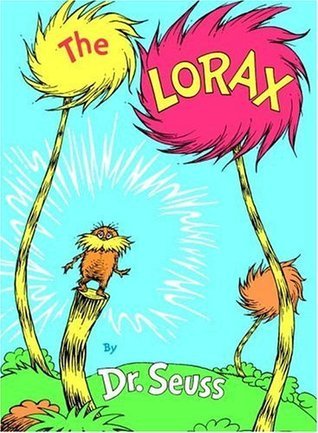
"UNLESS someone like you...cares a whole awful lot...nothing is going to get better...It's not." Long before saving the earth became a global concern, Dr. Seuss, speaking through his character the Lorax, warned against mindless progress and the danger it posed to the earth's natural beauty. (Goodreads)
This book gets mixed reviews, even within the science community. I’ve still added it to this list because my conservation ecology professor talked about it in class some a few times. It’s a good example for the tragedy of the commons and the effects of overharvesting. Many people claim that no human would ever let something like this happen, that they would eventually stop but history has proven otherwise. Real life examples including the extinction of the Dodo and the Steller Sea Cow, and the fall of Easter Island where many species of plant life native only to that island were lost due to overharvesting.
4. Walden by Henry David Thoreau
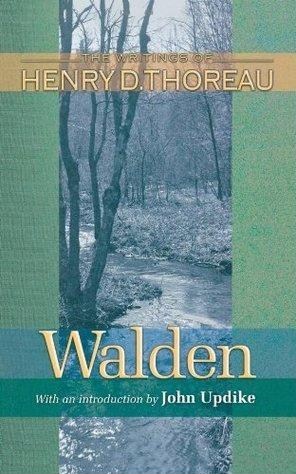
Walden, or, Life in the Woods, is an American book written by noted transcendentalist Henry David Thoreau. The work is part personal declaration of independence, social experiment, voyage of spiritual discovery, satire, and manual for self-reliance. Published in 1854, it details Thoreau's experiences over the course of two years in a cabin he built near Walden Pond, amid woodland owned by his friend and mentor Ralph Waldo Emerson, near Concord, Massachusetts. (Goodreads)
Thoreau believed that nature should be preserved because it was man’s closest link to God. He thought that humans needed nature to have a better spiritual connection. He was also one of the earliest natural historians and Walden was the most detailed account, at the time, about the nature of an area and how it changed over time.
5. The Diversity of Life by Edward O. Wilson

In this book a master scientist tells the story of how life on earth evolved. Edward O. Wilson eloquently describes how the species of the world became diverse and why that diversity is threatened today as never before. A great spasm of extinction — the disappearance of whole species — is occurring now, caused this time entirely by humans. Unlike the deterioration of the physical environment, which can be halted, the loss of biodiversity is a far more complex problem — and it is irreversible. Defining a new environmental ethic, Wilson explains why we must rescue whole ecosystems, not only individual species. He calls for an end to conservation versus development arguments, and he outlines the massive shift in priorities needed to address this challenge. No writer, no scientist, is more qualified than Edward O. Wilson to describe, as he does here, the grandeur of evolution and what is at stake. (Goodreads)
If you’re interested in a detailed account on evolution and species diversity then this book may be interesting to you and intriguing. Species diversity is extremely important to the environment and is threatened by many things including climate change and anthropogenic actions. It’s also interesting to read about the argument to save the whole environment in which a species lives and not just that species, which is a concept that is really being pushed today in conservation.
6. Last Child in the Woods by Richard Louv

"I like to play indoors better 'cause that's where all the electrical outlets are," reports a fourth-grader. Never before in history have children been so plugged in—and so out of touch with the natural world. In this groundbreaking new work, child advocacy expert Richard Louv directly links the lack of nature in the lives of today's wired generation—he calls it nature deficit—to some of the most disturbing childhood trends, such as rises in obesity, Attention Deficit Disorder (ADD), and depression.
Some startling facts: By the 1990s the radius around the home where children were allowed to roam on their own had shrunk to a ninth of what it had been in 1970. Today, average eight-year-olds are better able to identify cartoon characters than native species, such as beetles and oak trees, in their own community. The rate at which doctors prescribe antidepressants to children has doubled in the last five years, and recent studies show that too much computer use spells trouble for the developing mind.
Nature-deficit disorder is not a medical condition; it is a description of the human costs of alienation from nature. This alienation damages children and shapes adults, families, and communities. There are solutions, though, and they're right in our own backyards. Last child in the Woods is the first book to bring together cutting-edge research showing that direct exposure to nature is essential for healthy childhood development—physical, emotional, and spiritual. What's more, nature is a potent therapy for depression, obesity, and ADD. Environment-based education dramatically improves standardized test scores and grade point averages and develops skills in problem solving, critical thinking, and decision making. Even creativity is stimulated by childhood experiences in nature.
Yet sending kids outside to play is increasingly difficult. Computers, television, and video games compete for their time, of course, but it's also our fears of traffic, strangers, even virus-carrying mosquitoes—fears the media exploit—that keep children indoors. Meanwhile, schools assign more and more homework, and there is less and less access to natural areas. (Goodreads)
We also discussed this book in class earlier in the semester. My professor thought it important to point out how closely tied to nature we are and that our lives can be greatly affected by its absence. It’s an interesting read for anyone who wants to see the connections between a decline in physical and mental health and the amount of time we spend outside.
7. Song of the Dodo by David Quammen

In The Song of the Dodo, we follow Quammen's keen intellect through the ideas, theories, and experiments of prominent naturalists of the last two centuries. We trail after him as he travels the world, tracking the subject of island biogeography, which encompasses nothing less than the study of the origin and extinction of all species. Why is this island idea so important? Because islands are where species most commonly go extinct -- and because, as Quammen points out, we live in an age when all of Earth's landscapes are being chopped into island-like fragments by human activity.
Through his eyes, we glimpse the nature of evolution and extinction, and in so doing come to understand the monumental diversity of our planet, and the importance of preserving its wild landscapes, animals, and plants. We also meet some fascinating human characters. By the book's end we are wiser, and more deeply concerned, but Quammen leaves us with a message of excitement and hope. (Goodreads)
Interesting read for anyone who wants to learn about the idea of Island Biogeography and extinction. An island isn’t necessarily a land mass surrounded by water, islands now can refer to any habitat that is surrounded by a completely different habitat. For instance, a small park in the middle of a city is considered an island, also lakes and mountain tops. The relation to the Dodo is that the bird went extinct rather quickly, before anyone could really record everything about it, after humans made contact with it. The Dodo went extinct because it could not leave the island and escape the new threat-humans.
8. The Edge of the Sea by Rachel Carson
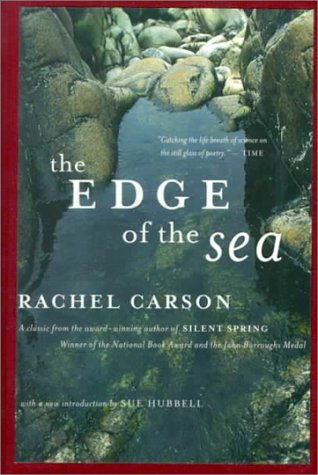
"The edge of the sea is a strange & beautiful place." A book to be read for pleasure as well as a practical identification guide, The Edge of the Sea introduces a world of teeming life where the sea meets the land. Rachel Carson's books have become cornerstones of the environmental & conservation movements. (Goodreads)
Another book by Rachel Carson that talks about the various environments found within the ocean and the creatures that inhabit them. Interesting read for learning and species classification.
9. Plant Earth: As You’ve Never Seen it Before by Alastair Fothergill, Vanessa Berlowitz, Mark Brownlow, Huw Cordey, and Jonathan Keeling
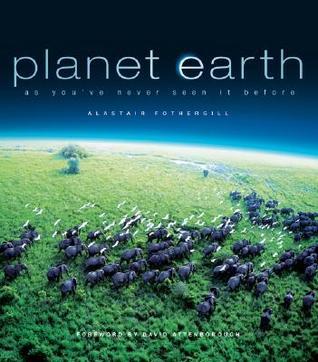
A visual odyssey that will change the way we see our planet, this remarkable book, companion to the acclaimed Discovery Channel/ BBC series, is an enduring and awe-inspiring record of one of the most ambitious natural history projects ever undertaken. Using the latest aerial surveillance, state-of-the-art cameras, and high definition technology, the creators of Planet Earth have assembled more than 400 stunning photographs of wondrous natural landscapes from around the globe, including incredible footage of the rarely spotted, almost mythical creatures that live in these habitats. Many of the images reveal inaccessible places that few have seen and record animal behavior that has never been filmed or photographed before. With the help of this highly advanced technology and the world's premier wildlife photographers, the book takes us on a spectacular journey from the world's greatest rivers and impressive gorges, to its mightiest mountains, hidden caves and caverns, and vast deserts. Planet Earth captures breathtaking sequences of predators and their prey, lush vistas of forests viewed from the tops of towering trees, the oceans and their mysterious creatures viewed from beneath the surface, and much more—in a magnificent adventure that brings unknown wonders of the natural world into our living rooms. (Goodreads)
Pretty much if you like BBC’s Plant Earth series you’ll like this book. It’s full of pictures, detailed accounts, and bountiful information that you may find intriguing.
10. The Forest Unseen by David George Haskell

A biologist reveals the secret world hidden in a single square meter of forest.
In this wholly original book, biologist David Haskell uses a one-square-meter patch of old-growth Tennessee forest as a window onto the entire natural world. Visiting it almost daily for one year to trace nature’s path through the seasons, he brings the forest and its inhabitants to vivid life.
Each of this book’s short chapters begins with a simple observation: a salamander scuttling across the leaf litter; the first blossom of spring wildflowers. From these, Haskell spins a brilliant web of biology and ecology, explaining the science that binds together the tiniest microbes and the largest mammals and describing the ecosystems that have cycled for thousands—sometimes millions—of years. Each visit to the forest presents a nature story in miniature as Haskell elegantly teases out the intricate relationships that order the creatures and plants that call it home. (Goodreads)
A book similar to Walden, it’s another natural account of an environment for a whole year. Interesting to anyone who enjoys short stories, liked Walden, or is fascinated by nature and how it changes over time.
#booklr#science#books#Book Recommendations#Earth Day#march for science#rachel carson#silent spring#the edge of the sea#the sea around us#the diversity of life#the lorax
7 notes
·
View notes
Text
If like us, you enjoy staying somewhere with a bit of character, somewhere different from the norm, then you’ll love these beautiful, quirky hotels in the UK. Perhaps you’d like to treat a loved one to surprise getaway with a difference. Which would be your idyllic quirky retreat? A log cabin by a lake, a historic castle or a lighthouse keepers cottage perhaps? Here are a few of our favourite unusual places to stay in the UK.
[box] Please be aware that some links on this website are affiliate links, which means if you click on them and go on to buy a product we may earn a commission at no extra cost to you. [/box]
var stg = new Object(); stg.crt="107628805381536";stg.version="1.04"; stg.id=stg.name="adgshp-1170055312"; stg.width="728px"; stg.height="90px";stg.ReferenceKey="Hk193LDZDx7j9dOERsYHoQ=="; stg.Layout="WideStatic"; stg.Language="en-us";stg.Cid="1829015"; stg.City="233";stg.OverideConf=false; new AgdSherpa(stg,3).initialize();
Our favourite quirky hotels and holiday homes in the UK
St. Pancras Renaissance Hotel, London, England
by Dylan Jones, Shoot from the Trip
For an exceptional stay in the heart of London, the St. Pancras Renaissance Hotel is the perfect destination. The gothic and majestic façade of this stunning red-brick building is awe-inspiring, dating back to 1873 and designed by George Gilbert Scott.
The five-star hotel is stunning throughout. With guest rooms located in the beautiful Chambers Wing of the main building as well as the newly built modern Barlow Wing, the décor is traditional yet contemporary. Some of the rooms and suites have views into the main concourse of the St. Pancras station.
Wandering the public areas of the hotel is where you see the true charm of the building come alive. The highlight is the Grand Staircase – a sweeping double stairway leading up from the ground floor to the fourth-floor gallery. Beautifully restored to Scott’s original vision, including an ornate vaulted ceiling above, it is something of a masterpiece.
Dining options include the cathedral-like Booking Office Restaurant in the old station ticket hall and chef Marcus Wareing’s distinctive dining experience in The Gilbert Scott Bar & Restaurant. The Hansom Lounge in the atrium lobby is the perfect place to wind down and relax after a long day.
Check current prices and availability at St. Pancras Renaissance Hotel, London
var stg = new Object(); stg.crt="107630335660839";stg.version="1.05"; stg.id=stg.name="adgshp822347879"; stg.Width="728px"; stg.Height="90px";stg.RefKey="/0Tftce5vPg2OJrwTIowJA==";stg.AutoScrollSpeed=3000;stg.AutoScrollToggle=true;stg.SearchboxShow=false;stg.DiscountedOnly=false;stg.Layout="widedynamic"; stg.Language="en-us";stg.ApiKey="ad812c1a-6cca-4114-bff8-239915c3153f";stg.Cid="1828862"; stg.City="1196";stg.Currency="USD";stg.OverideConf=false; new AgdDynamic('adgshp822347879').initialize(stg);
Log House Holidays, Cotswolds, England
By Jaillan Yehia, Savoir There
What could be quirkier than staying in your own private lakeside log cabin, built entirely with sustainable Finnish wood and complete with a private hot tub and a host of wilderness activities – yet all right here in the UK? That’s precisely what’s on offer at Log House Holidays, a set of eight unique luxury log houses, which bring pure Scandinavian chic to a secluded corner of The Cotswolds.
The eco credentials of this family-run estate are impressive; the entire 130-acre site is a protected nature reserve and thriving wildlife habitat, with over 50,000 trees. It’s almost entirely self-sustained by solar power too. The cabins themselves are built for bitter northern European winters so staying cosy indoors is no challenge. They stay naturally cool in summer in case you want to stay inside rather than bask on your private deck or take your kayak out for a paddle. Plush interiors include all the mod cons you’d want from a luxurious holiday home, including farmhouse kitchens, roll top baths, comfy sitting rooms and traditional log burners.
There are plenty of activities in the nearby villages if you do want to leave the total tranquillity behind, including country pubs and local sights, but it doesn’t get much better than contemplating the view of your private jetty with a glass of wine in hand.
Read Jai review in full on her blog, Savoir There.
Check availability and prices, Log House Holidays.
St John’s Point Lighthouse, Killough, County Down, Northern Ireland
View this post on Instagram
A post shared by Steller (@stellerstories) on May 21, 2019 at 6:49pm PDT
Set amongst some of Northern Ireland’s most dramatic surroundings, this delightful lighthouse keeper’s cottage, sleeping four, is perfect for a memorable family holiday. Just a ten-minute drive from the village of Killough the lighthouse has been lovingly restored with great attention paid to every detail transforming it into a comfortable and cosy hideaway. Wooden floors, whitewashed walls and traditional, country furnishings add to the charm and sense of history.
There’s plenty to do in the area too. Once you’ve tired of clifftops walks, head to Strangford Lough, just over half-an-hour away, set in an area of Outstanding Natural Beauty, or enjoy the many attractions that Belfast has to offer only 31 miles away, including the outstanding Titanic Experience and it’s fabulous food and drinks scene.
Check prices and availability, GreatLighhouses.com.
Amberley Castle, West Sussex, England
By Kathryn Burrington, Travel With Kat and Sussex Bloggers
Amberley Castle is a majestic castle that has been transformed into a luxury hotel in the charming little village of Amberley in the South Downs National Park. A sweeping driveway leads through the grounds and expansive lawns and inside the castle walls via the portcullis, dating back 900 years. What could make a more grand entrance? Amberley is one of my all-time favourites when talking about quirky hotels in the UK.
Each of the 19 bedrooms is uniquely designed and furnished with antiques and fine fabrics. Dripping with luxury and history, the hotel remains unpretentious, and the staff are simply superb, as is the restaurant where the food is as beautifully presented as it is tasty. And the gardens and grounds are a joy to explore – keep an eye out for the magnificent resident white peacocks.
Read Kathryn’s review of Afternoon Tea at Amberley Castle. Read the latest reviews and find the lowest prices on TripAdvisor.
Check prices and availability, Amberley Castle.
var stg = new Object(); stg.crt="107630826674985";stg.version="1.05"; stg.id=stg.name="adgshp822347879"; stg.Width="728px"; stg.Height="90px";stg.RefKey="/0Tftce5vPg2OJrwTIowJA==";stg.AutoScrollSpeed=3000;stg.AutoScrollToggle=true;stg.SearchboxShow=false;stg.DiscountedOnly=false;stg.Layout="widedynamic"; stg.Language="en-us";stg.ApiKey="ad812c1a-6cca-4114-bff8-239915c3153f";stg.Cid="1828862"; stg.Poi="204829";stg.Currency="USD";stg.OverideConf=false; new AgdDynamic('adgshp822347879').initialize(stg);
Skye Shepherd Huts, Isle of Skye, Scotland
View this post on Instagram
A post shared by Skye Shepherd Huts Holidays (@skyeshepherdess) on Dec 17, 2018 at 3:00pm PST
Perfect for couples, these adorable former shepherd huts make a cosy hideaway in an idyllic location of the Isle of Skye surrounded by glorious views. With a comfy double bed, electricity supply, 3 G mobile coverage, a wood burning stove and tea and coffee making facilities in your hut and a high-quality toilet and shower close by just 50 m away, you’ll have everything you might need for an intimate escape for two.
Hotel Portmeirion, Wales
by Sally Akins, SallyAkins.com
Wales doesn’t get much quirkier than Portmeirion! The village nestles into the coastline of Ceredigion Bay, with the mountains of Snowdonia providing a dramatic backdrop. But this colourful Welsh village is filled with Italianate buildings and houses built in the Arts and Crafts style. And down by the coast, you’ll find a hotel that’s every bit as quirky as the rest of the village.
Hotel Portmeirion offers guests a luxurious getaway from the world outside the village. The bedrooms are beautifully and individually decorated, and many have stunning views out over the estuary. Downstairs, there are plenty of distinctive features like the intricately carved Renaissance marble fireplace inside the main entrance hall. The sitting room is filled with sumptuous leather sofas and armchairs, and the grand fireplace is supported by knights. And in the Mirror Room, gilt-edged doorframes and a multitude of curios add to the opulent style. But the jewel in Hotel Portmeirion’s crown is the Art Deco style restaurant, with its swooping curvilinear front and luxe interior. The menu features fabulous creations using local and seasonal ingredients, all with a little twist in keeping with the spirit of Portmeirion.
If you want to see the quirky side of North Wales, a stay at Hotel Portmeirion is a must.
Read Sally’s review in full at SallyAkins.com.
Check prices and availability, Hotel Portmeirion.
Malmaison, Oxford, England
by Lucy Dodsworth, On the Luce
Twenty-five years ago, anyone spending the night in the Malmaison hotel in Oxford didn’t have a lot of choice about it – it was the city’s prison. But the cells have been transformed into luxurious hotel rooms, and today’s guests are lining up to get locked up. The central atrium still has the original stairs and walkways, and there’s a restaurant and bar in the old visitors’ lounge. You can choose from a range of styles of room, but for the full prison experience, go for one of the cell double rooms in A-wing. Each room is made up of three former cells – one is now the en-suite bathroom and the other two make up the bedroom. They still have the original heavy cell doors so you do feel like you’re being locked up for the night – even if you get to keep hold of the key now.
Read Lucy’s review in full. OntheLuce.com.
Check prices and availability, Malmaison
var stg = new Object(); stg.crt="107630335660839";stg.version="1.05"; stg.id=stg.name="adgshp822347879"; stg.Width="728px"; stg.Height="90px";stg.RefKey="/0Tftce5vPg2OJrwTIowJA==";stg.AutoScrollSpeed=3000;stg.AutoScrollToggle=true;stg.SearchboxShow=false;stg.DiscountedOnly=false;stg.Layout="widedynamic"; stg.Language="en-us";stg.ApiKey="ad812c1a-6cca-4114-bff8-239915c3153f";stg.Cid="1828862"; stg.City="1196";stg.Currency="USD";stg.OverideConf=false; new AgdDynamic('adgshp822347879').initialize(stg);
Do you have a favourite quirky hotel in the UK?
Enjoy British eccentricity in these fabulously quirky hotels in the UK If like us, you enjoy staying somewhere with a bit of character, somewhere different from the norm, then you'll love these beautiful, quirky hotels in the UK.
0 notes
Text
An Apartment Renovation– Part Two!
Early last year I wrote a story about Color Outside The Lines blogger and interior designer Artie Vanderpool’s newly renovated apartment. Fresh from a break-up, Artie had moved to several different apartments, until he finally found one that he thought might be good enough to put down some roots – AND one he could decorate to his heart’s content. After living in an older, vintage house with dark moldings – Artie craved light and bright. His newest place was all this, plus large and airy, and after a rough start, he was ready to share his place with the world.
Originally, the apartment had white walls and a sea of beige wall to wall carpeting. What you can’t see here is that it also had lots of windows to let in the bright sun.
But the carpet had to go and so did the light fixtures and mini blinds – it was all too boring for Artie’s chic aesthetic.
Artie’s manager gave him permission to make these changes, but he probably would have rescinded if he had seen what the apartment looked like during the reno process!!
Before he moved in, Artie had all the boring carpet pulled up with plans to put down wood floor tiles. Except, decades of carpet glued down to concrete doesn’t make a pretty picture. Artie spent nights cleaning up the concrete in order to install the tiles.
But they wouldn’t adhere to the concrete. He almost gave up and put the carpet back down…but instead, Artie had a brainstorm…
He painted the concrete white!
And then decided he absolutely hated all the white.
Except, now that the floor was tacky from the paint, he tried to install the wood tiles again, and miraculously – they finally stuck!
It’s not actually a real wood floor, but it looks exactly like one.
And here is the new dining room with his newly installed wood floor, chandelier, and gallery wall. He also installed dimmers on strategic lights such as the dining room and hallway.
He added curtains, textured shades and lots of accessories and the apartment looked fabulous!
Here is the living room with the tufted sofa and chinoiserie cabinet. More art work and a layered rug over seagrass give the apartment a real luxe feel.
The view from the dining room, with two slipcovered stools.
And in Artie’s bedroom – what he really didn’t want you to see, is that he never pulled up the carpet in the bedroom. This detail was overlooked in the original story.
Artie had bought this four poster bed online and when it arrived, he discovered it was a bit out of proportion and he had to remove the top canopy. The bed was just too short, as you can see in this photograph.
Since Artie was never really happy with the bed (of course not!) nor the bedroom in general (of course not!) a MAJOR change was in the works (of course!)
Besides the changes in the bedroom, there also was his media room, which he NEVER told me he even had! Actually, the apartment has two bedrooms and the second one was turned into a cozy TV room.
Along with those two new projects, there was his kitchen. He totally redid the tiny apartment kitchen over two weekends and a few nights. It is amazing.
Ready?
The Living Room:
There have been a only few changes in the living room since the first story. Artie’s favorite pieces include his pair of Savonarola chairs with their custom black slipcovers and the chinoiserie chest, which is the focal point of the room. The Kravet sofa has a Pindler and Pindler velvet cushion cover with a Samuel & Sons jute chevron trim to help protect the cream sofa against his two puppies.
In the corner, Artie added an old concrete urn. He bought the urn for his dining room table, but it was too heavy, the plant is perfect for it.
The new urn and more plaster pieces.
On this side, he added a new brass lamp – and a fancy-pants Hermes blanket is peeking out!! The chair is from Pottery Barn, but has been discontinued and the brass chest is from Ken Fulk.
The Dining Room:
In the dining room, there’s a new side chair and a new friend – the bust on the chest.
The cane and leather chair was a steal – $40 at a NYC thrift shop. Plus the $200 he paid to ship it home!!
His new room-mate is Mr. Nathaniel Hawthorne. At least he is quiet and doesn’t have an opinion about painting over dark molding. And he likes to drink, so Artie keeps the bourbon close by.
The Hickory Chair table got a new urn and orchid.
And the very latest tablescape – new blue & white and a collection of antique cross bottles which Artie creates and sells HERE.
The Kitchen:
Before: The kitchen is just a regular apartment kitchen. Nothing too grand, but nice and clean with new cabinets.
How to make this plain area look more “Artie?”
To turn it into his own, first Artie took down the upper cabinets. Yes. He did that himself. Next, he added shelves for dishes and glasses. Then, he made a linen skirt to use instead of lower cabinet doors.
The new look: Artie made a fabric shade for the window and bought a new glass pendant to dress up the kitchen. A lamp and candlelight add mood.
Artie added open white shelves instead of closed cabinets which makes the kitchen look so special. And, I love the linen skirts instead of lower cabinet doors!
Love the oil painting. I am crazy over the changes!!! The kitchen looks so great compared to what it looked like before!!
Hard to believe this is the same space – just a few days later!
Artie added a rug to tone down the vinyl flooring but who notices the floor when the shelves are so cute?!?
The brass stool in the hallway is from Target, believe it or not! The oil painting on the top is by Ted Ellis of Ted Ellis Fine Art and is one that Artie treasures.
One more view!
The Media Room:
The Media Room had two windows and more boring carpet. For a few months, Artie just kept the door closed. Then, inspired by a photo of an extra long day bed…
he ripped up the carpet, installed the wood tile floor and created a sofa/day bed:
One long daybed becomes a slip covered sofa. Artie added three sconces from Lowes for reading light.
I love the one gilt frame mixed amongst the black framed pieces of art.
Artie said he took a few months to decide what to do with this room. He knew he needed a space for guests to sleep in and he wanted a spot to watch TV. He designed the day bed with a 10” memory foam mattress and stiff back cushions make it feel like a sofa.
Art work hangs on the walls. Love the two wicker chairs. You know what? I think the Hermes blanket would look really good in here, Artie!! Maybe you should move it here?
Art is from Stellers Gallery in Jacksonville HERE.
Seagrass rug layered over the floor and Thomasville leather ottoman doubles as a coffee table.
IDEA: Artie switched out the legs and added these brass caster ones, which really is an upgrade and a great idea!!! The caster legs look so much nicer!!!
The custom made sofa is 10' long and 36" wide and is slipped in a white cotton denim.
Pindler & Pindler mohair and silk velvet pillows.
The throws are so inexpensive, Artie bought 8! HERE They come in different colors, too.
Curtains with fabric shades are lined with textured shades – to make it all cozy and warm.
IDEA: Notice the skirted table the flatscreen is on – it is really hiding the dogs bed that is underneath the skirt!!
BTW – Artie made the curtains, shades AND the skirt!!
Plaster side tables and garden seats do double duty.
The wicker chairs are old – from Williams Sonoma.
A very similar chair is available at Wayfair HERE.
I love a wicker chair in a room – it’s a great accent and adds texture and warmth and a touch of individuality.
So sweet – Louna’s watching TV!!!
This is such a cozy and warm room to read and watch TV in.
Great job Artie!! Now, go bring the Hermes blanket in here. LOL.
The Bedroom:
The master bedroom was just the same as the rest: more boring beige carpet and mini blinds.
Artie’s first bedroom décor was very nice – in blue stripes. But he never cared for the bed. So he sold it.
And then, he bought a lot, a LOT of brown and white striped fabric and….
Now the bedroom looks like this. Amazing!!
First Artie got a new bed, which is iron with a painted finish, then he lined the walls with the brown and white fabric. And next he added a striped rug over the seagrass over the wood floors that he had installed.
It’s just beyond fabulous!! Seriously. It’s beyond fabulous.
I’m so in love with this room!
At the left is a French bench with a slipcover and an oversized mirror. At the windows are the white curtains and textured blinds.
The fabric is from Valdese Weavers, a mattress ticking with a brown ribbon used for trim. Artie ended up using 35 yards!
Close up of the slipped French bench. Notice the trim. And notice the trim around the wall covering. Perfect!
Even though Artie complains that the stripes aren’t straight in places, it looks perfect to me. He said it was really hard to hang the fabric, but it was all worth it because this is his favorite room. I agree. It’s my favorite too!!!!!
Across from the bed is the chest flanked by two slipper chairs with striped fabric.
The two slipper chairs flank the chest. The chairs are in a different striped fabric.
Another view. Notice the trim at the ceiling. So perfect!
The rug is from Safavieh.
Awwww. Sweet Louna, the French Bulldog!!!
Parting shot. Notice how Artie brought in some art work with orange tones to tie in with the blinds and the velvet tiger fabric.
Just perfect Artie. Seriously – this is a dream come true apartment. I’m sure he could be happy here for the next decade, but something tells me he probably will be moved out before the year is over!!!
To visit Artie’s blog and portfolio, go HERE.
Be sure to visit Artie’s Cross Bottle Shop HERE. He sells antique cross bottles, above, AND he will custom make what you want in case something is sold out. Just email him at:
to discuss his bottles!
More.
More.
And more.
AND…
Christmas season is coming up and new design books are being released weekly. Interior designer Victoria Hagan’s book Dream Spaces is one of the new ones and it’s so beautiful!!
Hagan’s book features 10 houses – and each has something in common…they are all second homes, vacation homes. The book is large and luscious with beautiful photographs.
There is Victoria’s own house in Nantucket….
And this house is in Aspen. Can you imagine waking up to these views of Ajax Mountain?????
And this Florida house.
To order Dream Spaces, just click on the book or HERE.
And I haven’t read this one yet. I did read his wife, Joanna’s book and found it interesting and entertaining. Now that the Gaines have announced they are retiring from HGTV (no!!!) – I’m afraid we won’t be seeing so much of the Gaines. To order, click on the book or HERE.
from COTE DE TEXAS http://cotedetexas.blogspot.com/2017/10/an-apartment-renovation-part-two.html
0 notes
Text
eBird Report - Fort Steilacoom Park, Jul 3, 2017
Fort Steilacoom Park, Pierce, Washington, US Jul 3, 2017 8:40 AM - 10:10 AM
Protocol: Traveling
3.62 mile(s)
Comments: The original plan today was to only do a quick checklist as I passed through the park. The closure of Chambers Creek Road (train derailment) cut out my primary stretch of the Canyon Trail. To compensate, I extended my walk at Fort Steilacoom Park, although I still cut corners. I completely missed the forested section and the barns, and the segments I hit were shortened.
Additional sightings: Rabbits, Gray Squirrel, Douglas Squirrel
27 species (+2 other taxa)
Canada Goose 21
Wood Duck 9
Mallard 7
Mallard (Domestic type) 2
California Quail 1 Heard
Great Blue Heron 1
Osprey 1
Bald Eagle 1
Red-tailed Hawk 1
American Coot 1
Rock Pigeon (Feral Pigeon) 1
Anna's Hummingbird 1
Western Wood-Pewee 1
Willow Flycatcher 2 One seen, at least one other heard
Steller's Jay 1 Heard
American/Northwestern Crow 21
Tree Swallow 1
Violet-green Swallow 2
Black-capped Chickadee 2
Swainson's Thrush 1 Heard
American Robin 2
European Starling 4
Dark-eyed Junco 1
White-crowned Sparrow 2
Savannah Sparrow 2
Song Sparrow 2
Spotted Towhee 4
Red-winged Blackbird 2
American Goldfinch 2
View this checklist online at http://ebird.org/ebird/view/checklist/S37951697
This report was generated automatically by eBird v3 (/content/nw)
0 notes
Text
May 13th Real Ghost Stories with Steve Stockton & Sysco Murdoch
In the 1st hour we drag Elizabeth Anglin and her Cosmis Passport into the cabin kicking and screaming as Eileen Meyer returns to discuss her book "Koyopa: Contact Within" and tells us: The courageous story of how one American woman transcended normal. That is, she rediscovered the natural human state beneath the past trauma and conditioning of “life as we’ve always known it.” Her transformational story is told through the inner, feminine view of a lifetime of Angel-ET visits, and numerous Kundalini-Koyopa episodes in the physical body. The nonhuman intelligence “spoke” in frequency, and informed her of humanity’s evolutionary leap in consciousness at this definitive crossroads in time. She was shown that everyone is wired within to accept, integrate, and move forward with these shifts into whole consciousness, but it is a choice. In the 2nd hour we welcome Steve Stockton and Sysco Murdoch, and discuss the ghosts and what this new wanna be ghost hunter culture is doing, or not doing to help. Steve is a deep well if great stories, Sysco calls him a "Steller Teller" andshares a similar Paranormal road map through life. Among Steve's books are "Strange Things in the Woods" and "My Strange Life". Steve is a veteran outdoorsman, author and has been investigating the unexplained for over 35 years. Originally from the mountains of East Tennessee, Steve has traveled all over the country, many parts of the world, and now makes his home in Portland, Oregon, near the wilds of bigfoot country in the Pacific Northwest. Steve’s influences are his gypsy witch grandmother who told him legends and stories as a small child, as well as authors such as Frank Edwards, John Keel, Charles Fort, Loren Coleman, Ivan Sanderson &Colin Wilson. His published books include Strange Things in the Woods & More Strange Things in the Woods as well as My Strange World, where he talks about his own experiences dating back to childhood. Sysco has been searching for pieces to the paranormal puzzle since her first encounter with an angry ghost as a child. That search was set in full motion upon finding a book by Hans Holzer and his desire to help the family and the tormented entity. Her openmined, heartfelt search continues still after 45 years. Believing , 'All wisdom is not found in one place', shes been collecting theories and information from a Native American background, & Elders from many spiritual paths, helping in an open minded heartfelt search for ways to help the ghosts that find her. Leading with first, ' do no harm' and trying to remember ghosts are people too, with all the different personalities that come with being human. Favorite authors in the genre include Hans Holzer, David Weatherly, Barry Strom, Patrick Burke, Steve Stockton, Steph Young, & Echo Bodine. She is a Wire Sculpter , owns her own business , and is currently writing a book with Steve Stockton. http://feed.informer.com/digests/QVGGJ1BBHY/feeder
0 notes
Text
May 13th Real Ghost Stories with Steve Stockton & Sysco Murdoch
In the 1st hour we drag Elizabeth Anglin and her Cosmis Passport into the cabin kicking and screaming as Eileen Meyer returns to discuss her book "Koyopa: Contact Within" and tells us: The courageous story of how one American woman transcended normal. That is, she rediscovered the natural human state beneath the past trauma and conditioning of “life as we’ve always known it.” Her transformational story is told through the inner, feminine view of a lifetime of Angel-ET visits, and numerous Kundalini-Koyopa episodes in the physical body. The nonhuman intelligence “spoke” in frequency, and informed her of humanity’s evolutionary leap in consciousness at this definitive crossroads in time. She was shown that everyone is wired within to accept, integrate, and move forward with these shifts into whole consciousness, but it is a choice. In the 2nd hour we welcome Steve Stockton and Sysco Murdoch, and discuss the ghosts and what this new wanna be ghost hunter culture is doing, or not doing to help. Steve is a deep well if great stories, Sysco calls him a "Steller Teller" andshares a similar Paranormal road map through life. Among Steve's books are "Strange Things in the Woods" and "My Strange Life". Steve is a veteran outdoorsman, author and has been investigating the unexplained for over 35 years. Originally from the mountains of East Tennessee, Steve has traveled all over the country, many parts of the world, and now makes his home in Portland, Oregon, near the wilds of bigfoot country in the Pacific Northwest. Steve’s influences are his gypsy witch grandmother who told him legends and stories as a small child, as well as authors such as Frank Edwards, John Keel, Charles Fort, Loren Coleman, Ivan Sanderson &Colin Wilson. His published books include Strange Things in the Woods & More Strange Things in the Woods as well as My Strange World, where he talks about his own experiences dating back to childhood. Sysco has been searching for pieces to the paranormal puzzle since her first encounter with an angry ghost as a child. That search was set in full motion upon finding a book by Hans Holzer and his desire to help the family and the tormented entity. Her openmined, heartfelt search continues still after 45 years. Believing , 'All wisdom is not found in one place', shes been collecting theories and information from a Native American background, & Elders from many spiritual paths, helping in an open minded heartfelt search for ways to help the ghosts that find her. Leading with first, ' do no harm' and trying to remember ghosts are people too, with all the different personalities that come with being human. Favorite authors in the genre include Hans Holzer, David Weatherly, Barry Strom, Patrick Burke, Steve Stockton, Steph Young, & Echo Bodine. She is a Wire Sculpter , owns her own business , and is currently writing a book with Steve Stockton. http://feed.informer.com/digests/QVGGJ1BBHY/feeder
0 notes
Photo
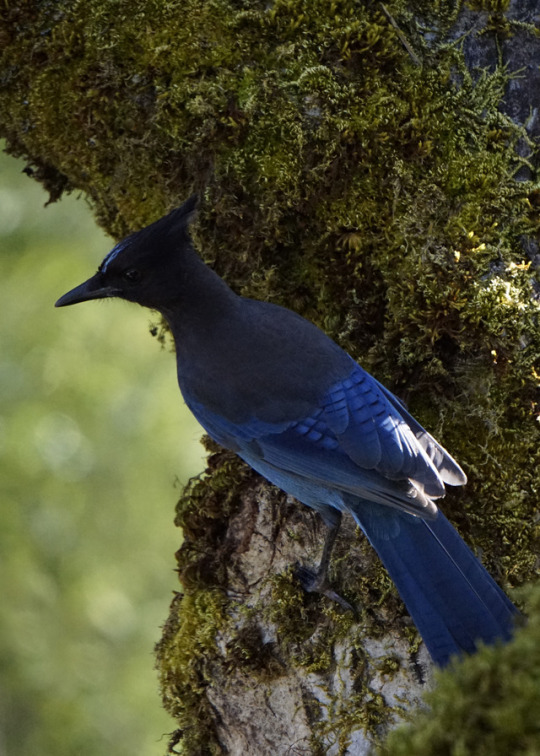
Steller’s Jay (Cyanocitta stelleri) ~ Eileen Kitayama 2017
#photographers on tumblr#original photographers#nature#bird#birds#outdoors#steller's jay#blue#moss#mossy#woods#forest#verdant#lush#wildlife photography#bird photography#corvids#feathers#pnw#pacific northwest
234 notes
·
View notes